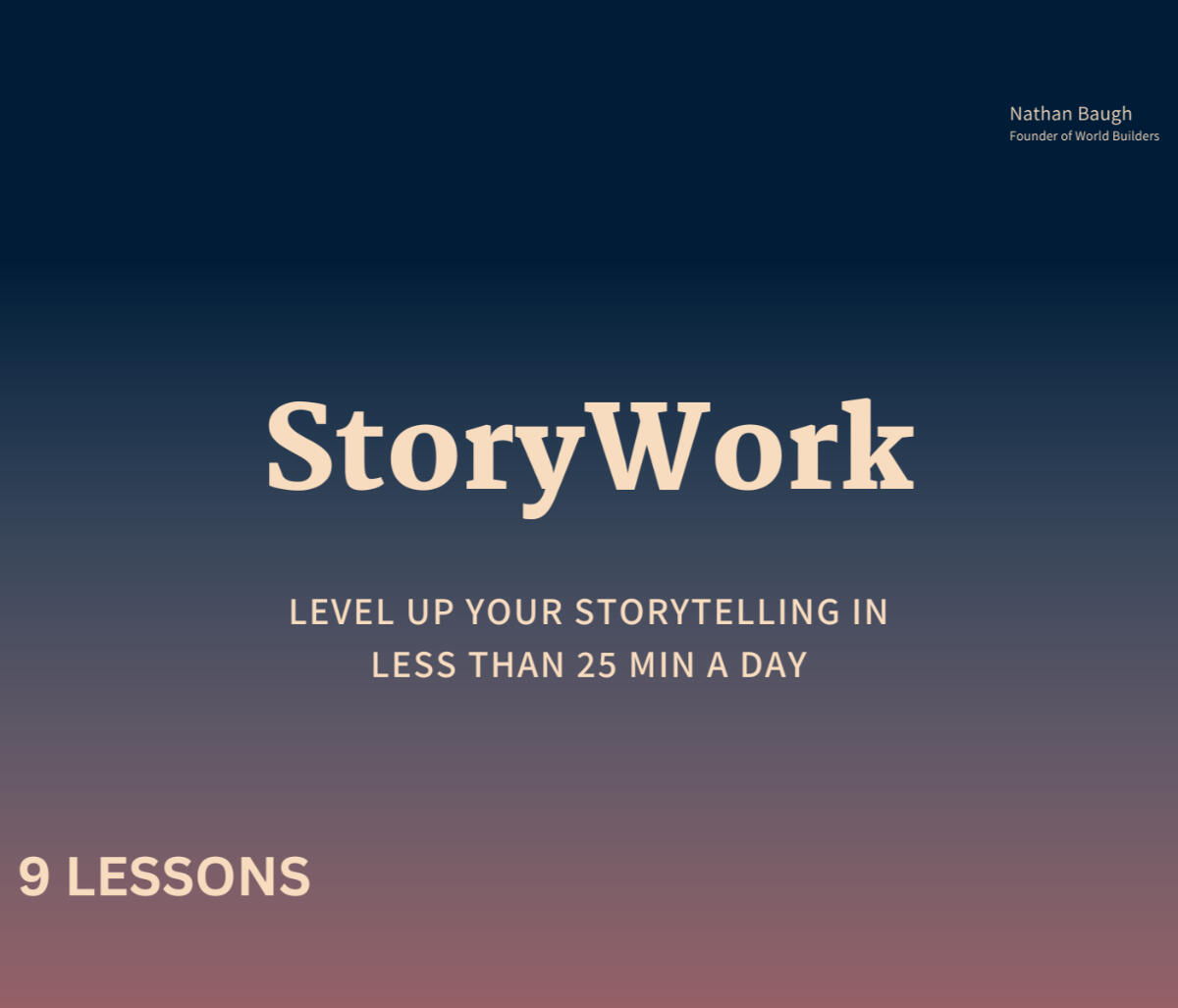- World Builders
- Posts
- The science of storytelling, how to use data, and more
The science of storytelling, how to use data, and more
Plus, the secrets of Ryan Reynold's ad agency
What’s up, got a fun one for you today.
1 quote
2 tips
3 resources
All designed to level up your storytelling. It’ll take about 4 minutes to read.

One Quote
You’re never going to kill storytelling because it’s built in the human plan. We come with it.
Atwood is more right than even she knew.
When the brain sees or hears a story, its neurons fire in the same pattern as the speaker's brain. It’s called “neural coupling.”
So, if you wanna control someone's mind, tell a great story.
Here’s a full breakdown of the phenomena from Princeton.


Two Tactics
1/ Turn data into stories
Solopreneurship 101:
When pitching your product, turn data into stories.
Stories hook.
Data supports.Together, they work magic.
— Justin Welsh (@thejustinwelsh)
5:02 PM • Jun 10, 2022
I love the simplicity of “Stories hook, data supports.” But it’s difficult to put into practice.
Here are five steps to nail it:
Identify the story you’re telling
Set the structure of your story
Gather supporting data
Incorporate all of the data into the story
Cut the data until you're left with the two or three strongest points
As a rule, I aim for 80% story and 20% data.
2/ Live in the moment
It sounds cliche af but when telling stories you need to be aware of the major events and cultural trends going on around you. Use them to enhance your message.
Your insight can be as simple as "wow, it's hot." Look at this ad from McDonald's:

The technical term is “responsive marketing.” It’s the art of latching onto a current theme to create a relevant piece of content around it.
Ryan Reynolds is the king of this tactic, using it to create many a viral moment. Here's how he used Father's Day last year to go mega-viral for his company Aviation Gin.

Three Resources
One Newsletter
Through the Noise is a great free weekly newsletter to simplify the world of venture capital.
Alex recently wrote about “Staying Alive Long Enough to Get Lucky.” The core concept is, as a company, the longer you avoid going out of business, the better chance at getting lucky you have. Maybe you’ll find product-market fit, hire that 10x engineer, or convince a larger company you’re worth acquiring.
I flipped this idea to creating content.
The hardest part about writing (or, I imagine, doing video), is not creating great content. It’s creating consistent content in a systemic matter that can be repeated week over week, for years.
“Staying Alive Long Enough” as a creator gives you time to get audience feedback, study your craft, and, eventually, get lucky.
I think this idea applies to almost everything.
One Podcast
Not Investment Advice – Trung Phan, Jack Butcher, & Bilal Zaidi
In 1973, George Lucas turned down $500,000 to direct the first Star Wars. Instead, he agreed to $150,000 with two tiny little add-ons… merchandise and sequel rights. When Star Wars hit warp speed, he parlayed those rights into over $5 billion.
As a storytelling nerd, I geeked out when Trung explained how George Lucas used The Hero’s Journey framework to turn a struggling story arc into the masterpiece that is Star Wars.
Listen here on Apple Podcasts or Spotify.
One Rabbit Hole
The evolution of Pablo Picasso’s self-portraits from age 15 to 90.
When asked about the evolution of his self-portraits – from good-looking teenager suspiciously devoid of acne to ‘that looks like an alien’ – Picasso shared two insightful thoughts.
The different styles I have been using in my art must not be seen as an evolution, or as steps towards an unknown ideal of painting.
Put another way: Picasso created for the present without considering too much the past or the future.
Different themes inevitably require different methods of expression. This does not imply either evolution or progress; it is a matter of following the idea one wants to express and the way in which one wants to express it.
Put another way: All stories cannot be told the same. Find the story you want to tell. Tell it your way.

I hope you enjoyed that. The biggest compliment you can give me is replying to share your thoughts.
See you next week,
Nathan

A message from... Me!
The interest in this tweet blew me away...
One way to become a better storyteller:
Take your two favorite authors. I recommend one non-fiction and one fiction.
Copy, word for word, their best work. Do it by hand.
I chose Paul Kalanithi and Neil Gaiman.
It’s the single exercise that improved my writing the most.
— Nathan Baugh 🗺️ (@nathanbaugh27)
3:06 PM • Jan 5, 2023
In my experience, there are two ways to get good at storytelling:
Study the greats (what this newsletter is for)
Practice, practice, practice
I do a lot of practice through StoryWork.
And so many of you liked, commented, and sent me DMs about the practice I decided to turn it into a guided course for you.
Check it out:

What'd you think of today's newsletter?
